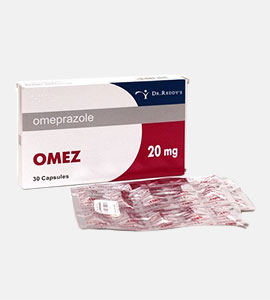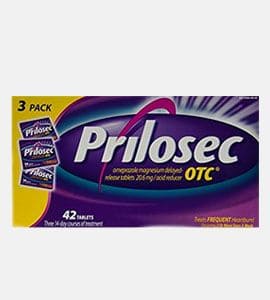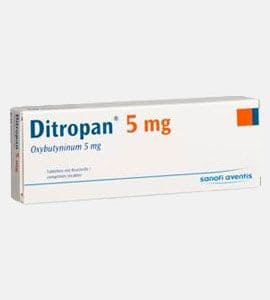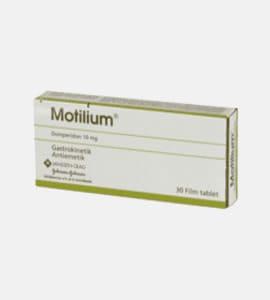Common use
Zantac is a blocker of H2-histamine receptors. The mechanism of action consists in the blockade of histamine H2-receptors of parietal cells in the gastric mucous layer. This medication suppresses day and night secretion of HCl (both basal and stimulated), reduces the number of gastric juices caused by stretching of the stomach with food load and by the action of hormones and biogenic stimulants such as gastrin, histamine, acetylcholine, pentagastrin, caffeine. Zantac reduces the amount of HCl in gastric juice almost without suppressing "liver" enzymes associated with cytochrome P450. It does not affect the concentration of gastrin in plasma, production of mucus. Zantac reduces pepsin activity. This medication is used to treat and prevent stomach and duodenal ulcers, gastrointestinal disorders caused by NSAID, heartburn, hypersecretion of gastric juice, symptomatic ulcers, ulcers caused by stress, erosive esophagitis, reflux esophagitis, Zollinger-Ellison syndrome and other conditions.
Dosage and direction
Take it orally with or without food. Correction of the dose should be made in patients with significantly abnormal liver or kidney function. Besides tablets, this medication maybe administered intramuscularly (IM) or intravenously.
Precautions
The Zantac effervescent tablet may contain phenylalanine. Notify your doctor if you are pregnant, plan to become pregnant or breastfeeding before to take Zantac. Risk of developing pneumonia may be increased by this medication.
Contraindications
Hypersensitivity, breastfeeding. In patients with liver or kidney failure, cirrhosis of the liver, acute porphyria (also in history), children younger than 12 y.o., pregnancy this medication should be administered with cautiousness.
Possible side effect
Besides possible allergy (hives, rash, swelling most common side effects of Zantac are constipation, diarrhoea, fatigue, headache, insomnia, muscle pain, nausea, and vomiting. Rare more serious side effects are agitation, anaemia, confusion, depression, easy bruising or bleeding, hallucinations, hair loss, irregular heartbeat, visual changes, jaundice.
Drug interaction
Antacids may decrease the absorption of Zantac, so their intake should be separated by 1-2 hours. Alcohol levels may increase if Zantac is taken simultaneously. This medication also increases the area under the plasma concentration-time curve (AUC) and concentration of Metoprolol in blood serum, slows the absorption of itraconazole and ketoconazole.
Missed dose
If you missed a dose take it as soon as you remember, but not if it is almost time of the next intake by your schedule. If so skip the missed dose. Do not try to compensate for a missed dose by taking an extra one.
Overdose
If you suspect that you took too much of the medication seek for immediate medical attention. Symptoms of overdose include lack of coordination, feeling light-headed, or fainting.
Storage
Save Zantac in a dry place away from sunlight at room temperature between 15-30 C (59-86 F).
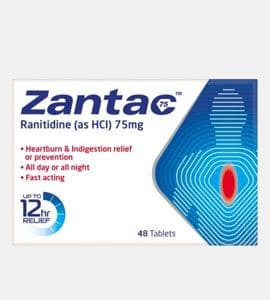

 English
English
 Español
Español
 Čeština
Čeština
 Italiano
Italiano
 Français
Français
 العربية
العربية
 Deutsch
Deutsch
 NZD
NZD



